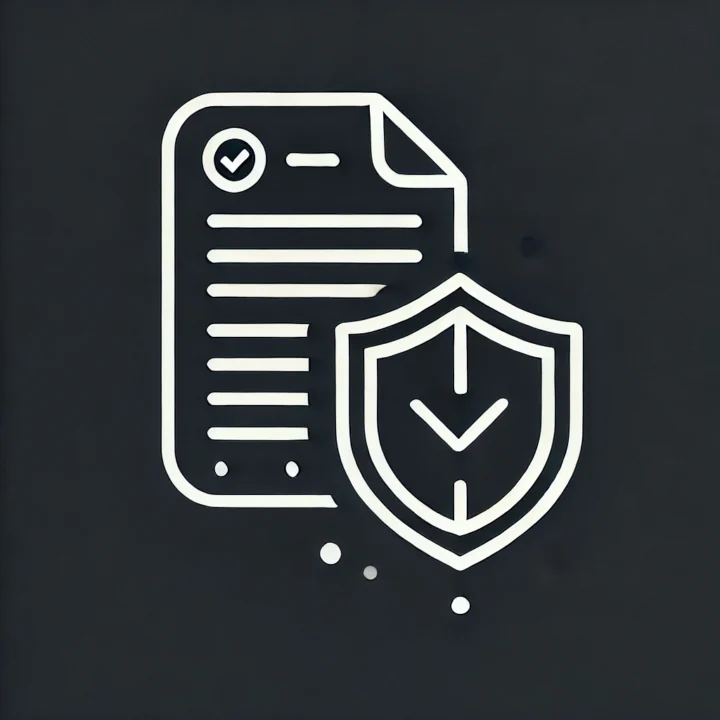ISO 27001:2022 Annex A Control 8.3
Abstract of Annex A Control 8.3: Information access restriction
Unrestricted access to sensitive data can lead to breaches, data manipulation, and non-compliance with legal requirements. ISO 27001 Annex A Control 8.3: Information Access Restriction ensures that only authorized individuals have access to specific information and assets in accordance with predefined policies.

Control Type
- Preventive
Information Security Properties
- Confidentiality
- Integrity
- Availability
Cybersecurity Concepts
- Protect
Operational Capabilities
- Identity and Access Management
Security Domains
- Protection
Objective of Information Access Restriction
The primary objective of Control 8.3 – Information Access Restriction is to ensure that access to information and other associated assets is limited to authorized personnel. This prevents unauthorized access, data leaks, and potential security breaches.
Key Focus Areas of Control 8.3:
- Ensuring access control aligns with organization-specific security policies.
- Restricting access to sensitive data, applications, and systems.
- Preventing unauthorized modification, deletion, or misuse of information.
- Supporting compliance with legal, regulatory, and contractual obligations.
- Enhancing data security without obstructing business operations.
Purpose of Information Access Restriction
The fundamental purpose of Control 8.3 is to safeguard your organization’s information by ensuring only authorized users have access to specific data and resources.
How Control 8.3 Protects Your Organization:
- Confidentiality: Prevents unauthorized individuals from accessing sensitive information.
- Integrity: Ensures that only approved personnel can modify critical data, preventing accidental or malicious alterations.
- Availability: Helps prevent unauthorized disruptions to data availability, ensuring essential business operations are not affected.
Implementation Guidelines for Control 8.3
Implementing Control 8.3 effectively requires a structured approach that includes policy development, access management mechanisms, and continuous monitoring.
Step-by-Step Implementation Guide:
Step 1: Develop Access Control Policies
Your organization should define clear policies governing access control. The Access Control Policy should outline:
- Who is authorized to access what information (role-based access).
- How access rights are granted, reviewed, and revoked (identity management).
- What authentication mechanisms should be in place (passwords, multi-factor authentication).
Step 2: Implement Strong Authentication & Authorization Controls
Use secure authentication mechanisms such as:
- Multi-Factor Authentication (MFA): Requires additional verification beyond passwords.
- Biometric Authentication: Fingerprint or facial recognition for high-security access.
- Token-Based Authentication: Uses physical or software tokens for access validation.
Authorization mechanisms should enforce the principle of least privilege (POLP)—ensuring that employees only have access to the data necessary for their job roles.
Step 3: Configure Access Controls in Systems, Applications, and Services
- Configure system access permissions for files, databases, and applications.
- Implement role-based access control (RBAC) to define user permissions based on job functions.
- Ensure that critical assets, such as financial data, are segregated from general access.
Step 4: Enforce Physical & Logical Access Controls
- Restrict access to server rooms, data centers, and high-security zones using physical security measures.
- Use network segmentation to limit access to sensitive systems.
- Apply firewalls, VPNs, and endpoint security to control logical access.
Step 5: Implement Dynamic Access Management
Dynamic access management provides real-time access control based on changing conditions such as:
- Device type and location: Restrict access to critical systems from unauthorized devices.
- Time-based access controls: Limit access to sensitive data outside business hours.
- Usage monitoring and anomaly detection: Identify suspicious activities in real-time.
Step 6: Monitor, Log, and Audit Access Activity
- Maintain detailed logs of all access attempts, modifications, and deletions.
- Use automated monitoring systems to track unusual behavior.
- Conduct regular access reviews to verify that permissions align with job roles.
Step 7: Conduct Regular Access Control Audits
- Review user access levels to ensure compliance with policies.
- Identify inactive or outdated user accounts that need to be disabled.
- Audit third-party access to minimize external security risks.
Dynamic Access Management Techniques
Traditional access controls are static and may not provide enough flexibility for modern organizations. Dynamic access management techniques allow real-time, conditional access adjustments based on various parameters.
Dynamic Access Techniques:
| Technique | Purpose |
|---|---|
| Time-Based Access Control | Restrict access during non-working hours. |
| Geofencing | Block access from unauthorized locations. |
| Behavior-Based Access Control | Detect unusual activity and trigger access restrictions. |
| Conditional Access | Require additional authentication based on risk level. |
Related ISO 27001 Controls
Control 8.3 is closely related to several other ISO 27001 controls that support access management:
- Control 5.15 – Access Control: Defines general access management policies.
- Control 5.18 – Access Rights: Manages user roles and privileges.
- Control 8.2 – Privileged Access Rights: Controls administrative access to critical systems.
Supporting Templates for Control 8.3 Implementation
Your organization can streamline implementation using ready-made templates that provide a structured approach to access management.
Recommended Templates Available on Our Website:
- Access Control Policy Template – Defines organization-wide access policies.
- User Access Request Form – Standardizes the approval process for granting or revoking access.
- Access Review Checklist – Helps with periodic access reviews and audits.
Ending Thoughts
Effective information access restriction is about ensuring that only the right people have access to the right data at the right time.
To implement this control successfully:
- Develop and enforce clear access control policies.
- Implement strong authentication and authorization mechanisms.
- Use dynamic access management for real-time security.
- Continuously monitor, audit, and refine your access control strategy.


